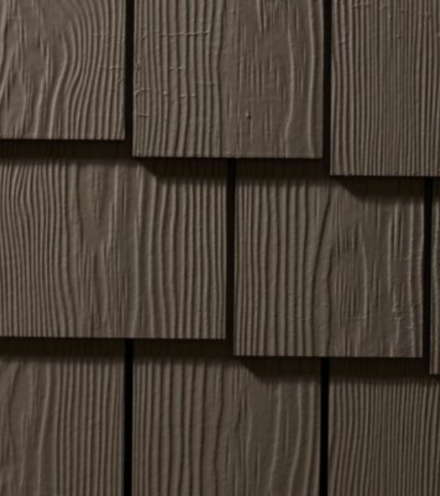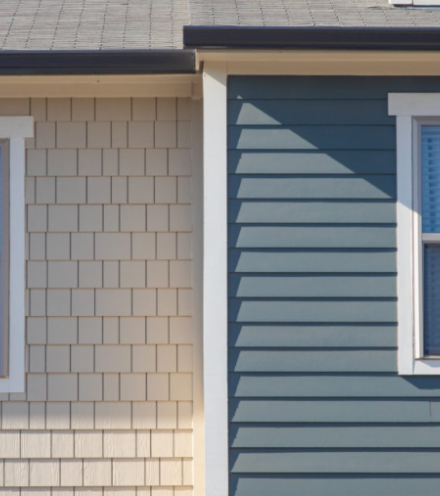
Redwood trim can be used around doors, windows, and other parts of a home’s exterior to add decorative value and cover exposed edges of the building. Redwood trim has been used on exteriors for years, however it comes with quite a few issues. For many reasons, builders recommend switching to a more durable, long-lasting material that can provide the same aesthetic quality as redwood trim.
Whether you’re getting ready to build with redwood trim or you’re already coming across problems with this material, it’s good to become aware of the pros and cons of redwood so you can make the best choice for your home. This guide provides a rundown of what to expect when building with redwood trim, as well as an alternative material to consider.
Benefits of Redwood Trim
There’s something about natural wood that draws people in. For that reason – as well as the abundance of resources in generations past – wood has always been a standard choice for building homes in the U.S.. Here are a few of the benefits of using redwood trim on a home’s exterior:
Lightweight and Easy to Work With
Redwood is categorized as a soft wood, which means that it’s quite easy to work with and shape. Unlike other types of wood, redwood trim can be cut, sawed, drilled, and lifted quite easily – even by amateur builders – which makes it a good choice for beginner woodworkers and DIY-enthusiasts.
Nice Grain Pattern
There are many types of redwood trees, and most people picture the massive coastal redwoods that grow in California. This variety grows to be about 380 feet tall with a diameter of 15 feet. Because of the sheer size, coastal redwood products can feature stunning ring patterns and grain that make it a gorgeous type of natural wood.
More Durable Than Other Wood Types
Redwood trim tends to be slightly more durable than other wood types that are used for siding and exterior trim, like pine. Although it is more durable than other varieties, it should be noted that durability is relative. There are other building materials, like steel and fiber cement, that are clearly much more durable than redwood trim.
The Main Problems with Redwood Trim

It’s true that redwood trim has been a popular choice in years past, mostly because of its natural beauty. Over the years, however, it has become obvious that redwood trim can come with a lot of headaches that can otherwise be avoided by using more modern materials. If you’re considering redwood trim, keep these common issues in mind:
Susceptible to Damage, Moisture and Deterioration
Moisture, impact, and everyday exposure to the elements can cause redwood trim to deteriorate, scrape and dent easily, and lose its original luster. Pests and wildlife can also pose threats to the beauty and integrity of redwood trim, as they may try to needle into the wood in the search of a nesting place.
Requires an Alkyd Primer Beneath Paint
Redwood trim requires a special treatment of alkyd primers before painting can take place, because redwood contains natural oils that can bleed through the paint and leave noticeable streaks and stains. An alkyd primer can help block some of this bleed-through so that the redwood trim has a better chance of maintaining a consistent appearance, but it will likely add time and effort to the installation process.
Expensive Material
A big complaint about redwood trim is that it’s expensive. Redwoods take a long time to grow and require a considerable amount of effort to be forested, milled, and shipped to different markets. The price of redwood fluctuates a lot, so the price point remains particularly high in most regions.
Not Sustainable
Redwood is a natural resource. With wildfires, droughts, and energy concerns becoming more and more prevalent, it’s worth pointing out that sustainability may be an issue when it comes to using redwood trees for building projects.
Color Changes Over Time
Redwood trim rarely maintains its original color consistency. The presence of UV light – which occurs with regular sun exposure – can cause redwood trim to darken naturally, especially if it isn’t primed properly. It may not be a big concern for a structure like a shed or fence, however color plays a big role when it comes to exterior house trim. Darkened redwood trim can dramatically alter the appearance and curb appeal of a home over time.
A Practical Alternative: Fiber Cement Trim
If you love the look of redwood trim but don’t like the idea of all of the maintenance that goes with it, fiber cement is a fantastic solution. Built to maintain its original appearance and exceptional color consistency, fiber cement is a long-lasting alternative to redwood trim. Plus, authentic-looking wood grain patterns capture the natural aesthetic that homeowners are looking for from redwood trim.
Contact Allura today to explore a smart alternative to redwood trim – one that offers long-lasting, low-maintenance beauty!




